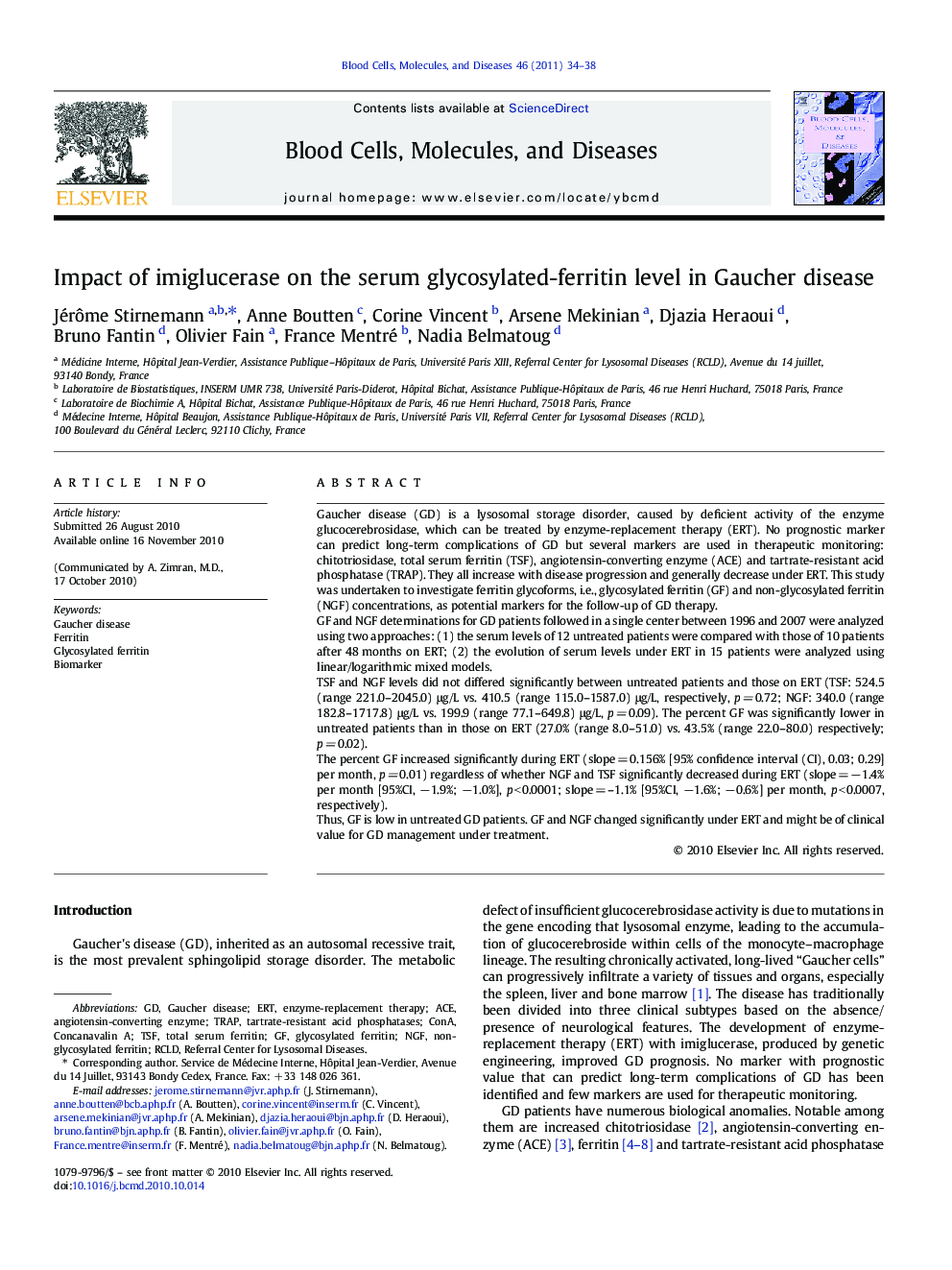| کد مقاله | کد نشریه | سال انتشار | مقاله انگلیسی | نسخه تمام متن |
|---|---|---|---|---|
| 2827872 | 1162469 | 2011 | 5 صفحه PDF | دانلود رایگان |

Gaucher disease (GD) is a lysosomal storage disorder, caused by deficient activity of the enzyme glucocerebrosidase, which can be treated by enzyme-replacement therapy (ERT). No prognostic marker can predict long-term complications of GD but several markers are used in therapeutic monitoring: chitotriosidase, total serum ferritin (TSF), angiotensin-converting enzyme (ACE) and tartrate-resistant acid phosphatase (TRAP). They all increase with disease progression and generally decrease under ERT. This study was undertaken to investigate ferritin glycoforms, i.e., glycosylated ferritin (GF) and non-glycosylated ferritin (NGF) concentrations, as potential markers for the follow-up of GD therapy.GF and NGF determinations for GD patients followed in a single center between 1996 and 2007 were analyzed using two approaches: (1) the serum levels of 12 untreated patients were compared with those of 10 patients after 48 months on ERT; (2) the evolution of serum levels under ERT in 15 patients were analyzed using linear/logarithmic mixed models.TSF and NGF levels did not differed significantly between untreated patients and those on ERT (TSF: 524.5 (range 221.0–2045.0) μg/L vs. 410.5 (range 115.0–1587.0) μg/L, respectively, p = 0.72; NGF: 340.0 (range 182.8–1717.8) μg/L vs. 199.9 (range 77.1–649.8) μg/L, p = 0.09). The percent GF was significantly lower in untreated patients than in those on ERT (27.0% (range 8.0–51.0) vs. 43.5% (range 22.0–80.0) respectively; p = 0.02).The percent GF increased significantly during ERT (slope = 0.156% [95% confidence interval (CI), 0.03; 0.29] per month, p = 0.01) regardless of whether NGF and TSF significantly decreased during ERT (slope = −1.4% per month [95%CI, −1.9%; −1.0%], p < 0.0001; slope = –1.1% [95%CI, −1.6%; −0.6%] per month, p < 0.0007, respectively).Thus, GF is low in untreated GD patients. GF and NGF changed significantly under ERT and might be of clinical value for GD management under treatment.
Journal: Blood Cells, Molecules, and Diseases - Volume 46, Issue 1, 15 January 2011, Pages 34–38